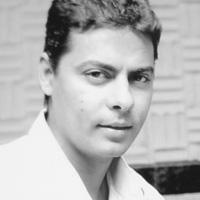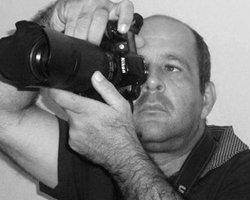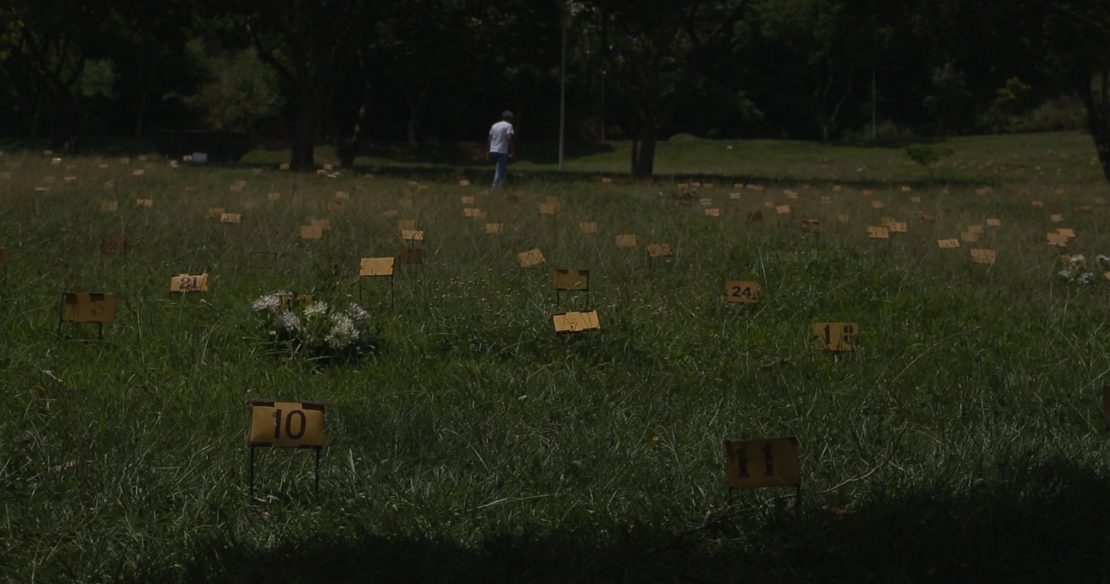Who ordered the killings of Rodrigo Neto and Walgney de Carvalho?
By Bob Fernandes

Rodrigo Neto
Rodrigo Neto de Faria was a journalist. He dreamt about being a chief of police. Civil police officer Lucio Lirio Leal was an accomplice in the murder of Rodrigo Neto.
Late night, March 8, 2013. Lucio Lirio Leal passed in front of a place known as “Churrasquinho do Baiano”; even if the sign indicated “Baiano do Churrasquinho.”
Lucio Lirio slowly drove a stolen truck, with cloned plate numbers, the result of a robbery in the state of Espirito Santo.
Journalist Rodrigo Neto was getting into his car when Alessandro “Pitote” Neves Augusto, a friend of police officer Lucio Lirio, approached. From the back of the motorcycle, he fired three times in the head and chest of Neto.
Five minutes before the killing, street surveillance cameras placed in shops and churches in Bairro Cannaa showed police officer Lucio Lirio driving around in the same route.
After the murder, “Pitote” and someone still unidentified used the same path again.
Rodrigo Neto was a radio broadcaster at Radio Vanguarda 1170.0 AM, in Ipatinga, a municipality in the heart of Vale do Aço, 210 kilometers from Belo Horizonte, the capital city of the state of Minas Gerais.
In the section called “What time has not erased” during the “Plantao Policial” show at Vanguarda, Rodrigo Neto talked about crimes that have been forgotten. He called upon the police and authorities for the lack of answers about the authorship of organized crime actions in Ipatinga and the Vale do Aco region.
A week before the reporter and broadcaster was murdered, he had returned to work for Jornal Vale do Aco, a newspaper that no longer exists. Neto intended to continue investigating and revealing killings linked with some groups of hitmen.
In his spare time, married and father of 7-year-old boy Neto studied to pass the test for chief of police.
He used to say for those close to him that he would soon disclose the names of members of a criminal organization active in Ipatinga and other municipalities of Vale do Aco.
Thirty-seven days after Neto’s murder, on April 14, 2013, the same “Pitote” shot and killed photographer Walgney Assis de Carvalho, 43 years old.

Walgney de Carvalho | Reprodução internet
The photographer was on a commercial fishing pond in Coronel Fabriciano, near Ipatinga. Riding once again a motorcycle, “Pitote” approached Walgney Carvalho and fired.
Carvalho took pictures of crime scenes and had personal and professional relationships with police officers and forensic experts.
Carvalho took the pictures of the dead body of Rodrigo Neto handed over to the police investigation of Ipatinga. The same “Pitote” killed both. Both with three shots. Both at close range.
On August 19, 2015, two years and five months after the crime, Alessandro “Pitote” Neves, charged for the murder of Rodrigo Neto, was sentenced to 16 years in prison. Lucio Lirio Leal was charged with co-authoring the crime and was sentenced to 12 years in jail.
The investigation only took place because of a set of pressures.
In Ipatinga and its surroundings, Rodrigo Neto’s colleagues organized marches, called upon the authorities, and took the investigation in their hands. In Belo Horizonte, the Union of Journalists of Minas Gerais took action, putting pressure and keeping the case in everyone’s memory.
A committee of journalists produced dossiers on several unsolved murders in the region and handed them over to the then governor, Antonio Anastasia. It also took care of providing radio and newspapers with information about the case.
State deputy Durval Angelo, member of the Human Rights Commission at the time, called for a thorough investigation.
Former Minister of Human Rights, Deputy Maria do Rosário went to Ipatinga in a hearing to follow the investigation and investigations carefully.
Governor Anastasia ordered the creation of a Task Force, headed by the chief of police Emerson Crispim de Morais, from the Department of Homicide and Protection of the Person (DHPP) in Belo Horizonte, plus four chiefs of police, six clerks, and 20 police investigators.
In addition to the murders of the two journalists, other crimes were investigated in separate investigations. “Theoretically,” according to chief Emerson de Morais, they involved civilian and military police officers.
The Task Force arrested 11 suspected police officers. Only one remains in jail – Lucio Lirio Leal, the accomplice in the murder of Rodrigo Neto.
Headquartered in Bairro Sao Cristovao, the DHPP was under renovation when we get there, so it was provisionally installed in a two-story building at Rua Josd Ildeu Gramiscellim, 51, in Bomfim.
Chief of police Emerson de Morais welcomed us on the second floor of the building. A calm and straight-forward man, Morais was wearing a dark blue suit, light pink shirt, and red, black, and white tie.
The delegate’s elegance highlighted the ill-fitting furniture and walls begging for new paint. He said:
“In the case of Rodrigo Neto, the authorship of Pitote and Lucio was clarified, but both deny involvement and refuse to reveal their motivation. There would be a third killer (who drove the motorcycle with Pitote as a ride), but there is no identification of others involved.”
As for the reasons for the murder of photographer Walgney Carvalho, the report by Chief Morais told the same story as that of journalists in the region:
“It was a witness elimination. It was necessary to shut his mouth. Carvalho used to drink and did not protect himself, speaking to acquaintances and strangers in bars…”
The chief of police mentioned hints by photographer Carvalho about the author of the murder of Rodrigo Neto.
“He said: ‘I doubt the police will find out [the killer],’ ‘They will never get to him,’ ‘I know who he is,’ ‘He’s close by’… That is why they ordered the murder,” said chief Emerson de Morais.
His friend Gisele Ferreira, 33 years old at the time of the crimes and a reporter for the Vale do Aco newspaper – now a reporter for Radio Itatiaia – said:
“… Rodrigo Neto said he had ‘bombastic news,’ but he didn’t talk about what it was about, and ended up dying in the same week. He was harshly critical of the death squads, and older journalists said there were always death squads around.”
Congressman Durval Angelo went further and said:
“He was killed by organized crime, formed by civilian and military police officers. We, members of the Assembly’s Human Rights Commission, do not doubt that the prisoners and convicts were only the executors.”
Kerison Lopes, former president of the Union of Journalist of Minas Gerais, current president of Casa do Jornalista OSCIP, followed the investigation and said:
“Usually, the death of journalists is the action of the local power, away from the large cities, in collusion of politicians, police, and judiciary members.”
In the wake of the murders of journalists in Vale do Aço, the Civil Police Internal Affairs Department expanded the investigation. Congressman Durval Angelo described the results:
“It showed illicit enrichment, with police officers who had low salaries owing mansions, properties, and farms. Some administrative proceedings continue, involving 20 civilian and military police officers.
Chief Emerson de Morais said:
“More than ten other homicides were investigated in the region, eleven policemen were arrested, and only one of them acted in a crime of passion.” Their participation in intentional crimes against life resulted in indictments in some cases. Some were taken to a jury.
And they are all free.
Despite the success in the investigation and conviction of two executors, the delegate cannot hide the discomfort when it comes to “bosses.”
He looked frustrated and frowned while speaking.
His frustration was even more transparent when he told two of the reasons for prisoners being released:
“The silence of witnesses and the evident hostility of the base of local police officers towards the task force. The witnesses say something in the course of the investigations, repeat these statements in the procedural instructions in the forum and, when the jury is in plenary, they do not appear or go back on what they said. Out of threats or pure fear.”
Sitting now as vice-president of the Human Rights Commission after leading it for 15 years, congressman Durval Angelo leaned back in the chair in his office and said:
“After the investigation of the Internal Affairs Department in Vale do Aco, crime rates – related to robberies, murders, kidnappings – that has always been very high in the region started to stay below the state average. Civil and military policemen were behind the crimes.”
Francisco Angelo Silva Assis is the prosecutor responsible for the Rodrigo Neto case.
Rodrigo Marcio do Carmo Silva, “Pitote’s” lawyer, lead us to the prosecution office, and also introduced us to prosecutor Francisco Angelo.
In the presence of the lawyer he defeated in the jury room, prosecutor Assis said:
“… [we found] a series of deviations by the police. The journalist’s death was a decisive moment, emphasized the need for these corporations to be concerned with their external controls, made society mobilize, fostered the work of the Public Prosecution Office and the Judiciary.
According to prosecutor Assis, there is “a completely different reality” in 2017.
The Metropolitan Region of Vale do Aco – known for steelmakers like Usiminas and Acesita, now Aperam South America – has an estimated population of 776,000 inhabitants and a GDP of 17.6 billion reais. Ipatinga has 261,000 residents.
Born in Caratinga, and then living in Vale do Aco for more than ten years, reporter and broadcaster Rodrigo Neto was obsessed with unsolved crimes. He was equally obsessed with criminals with the power to get away with their crimes. Perhaps his dream of being a chief of police was behind his obsession.
Congressman Durval Angelo described some of the crimes investigated by Rodrigo Neto and raised by the Task Force in Vale do Aço:
“A gang of policemen lived off the extortion of wealthy merchants and businessmen, from the collaboration of small and large crimes committed with merchants, and also through thefts that drug addicts practiced in the region. There was also the sale of driver’s licenses in the eyes of the department responsible for them, and they were a great source of corruption throughout Vale do Aco. And also contract killings.”
Journalist Gisele Ferreira told what she saw and what she heard from colleague and friend Rodrigo Neto:
“Rodrigo [Neto] always wanted to prove the existence of a death squad. He received several threats, including from a police officer. There is a report with the Public Prosecution Office. He was the one who defended low-income families who had no voice, influence, or the ability to demand justice when young people were murdered.”
Keirison Lopes said: “He never agreed with the phrase ‘a good outlaw is a dead outlaw’.”
“Most of the victims were blacks, from impoverished outskirts, poor and teenagers who disappeared and were found beheaded or shot in the back of the head, [which are] signs of execution,” said Ferreira.
“We believe in the involvement of councilors and congressmen. The prosecutor saw connections during the trial but failed to prove them.
Congressman Durval Angelo bravely exposed the profile of those who commanded the criminal organization at the top and felt threatened by the work of Rodrigo Neto:
“… involvement of several politicians.” It is not by chance that some of these policemen were candidates or coordinators of the electoral campaign and exercise municipal, state, and federal parliamentary mandate. Neto brought complaints about the torture of prisoners and murders for the Human Rights Commission.
The congressman goes further and vocalizes what others say only privately:
“Neto claimed to have found the (names) of the ‘crime syndicate’ in Vale do Aco. They were councilmen from Ipatinga, Coronel Fabriciano, and Timoteo, politicians from Belo Oriente, senior officers of the Military Police, and chiefs of police from the Civil Police, as well as a federal congressman who is now a deputy senator.
The so-called “crime syndicate” would have different sectors. “Groups of civilian and military police members did not work together; they had their areas of financial interests in which they could extort people. There’s no conflict of interests; they respected each other.”
While Durval Angelo spoke to us, half a dozen people listened in complete silence.
“A Military Police colonel covered up barbaric crimes, such as those of Corporal Vitor, who used a green motorcycle and received bribes from business owners to kill small-time drug dealers. He cut off the teenagers’ heads to scare the others and was protected within the police. And he’s been acquitted in several jury courts.”
Angelo broke down dark details of the methods of the “crime syndicate” denounced by Rodrigo Neto:
“When the Internal Affairs Department was investigating corporal Vitor and other military officers, the captain who presided over the investigation received, as a gift, wrapped in a newspaper, the head of a 15-year-old boy, a small-time drug dealer. As a warning. He left the investigation on the same day…”
“A judge named Marcelo, who protected these criminals, known for his involvement in the crime and denounced by me in the Internal Affairs and National Justice Council, was removed for several months by the CNJ (National Council of Justice), but has returned since then,” said Durval Angelo.
One of these witnesses who change their minds all the time provided one of the initial clues to elucidate the murder of Rodrigo Neto.
He confided: during a friendly meeting at a bar table, business people, politicians, police officers, and influential people expressed profound irritation with Rodrigo Neto, especially regarding his demands for investigating unsolved ancient crimes.
Versions about the link between complaints against Neto at the bar table and his murder are conflicting. In one version, on the bar table, the order for the killing would have come from the plaintiffs.
In another version – seen as a cover to protect the affluent participants of the meeting – “Pitote” and Lucio Lirio would have listened to the complaints in the bar and done by themselves the job to ascend in the organization.
Just like his victim Rodrigo Neto, “Pitote” was fascinated by the police. With regular access to the Ipatinga regional police station and other police stations, he behaved as if he were a policeman.
“Pitote” was an acquaintance of the photographer he would also kill. We used to tell inside information to Walgney Carvalho.
The hitman who pretended to be a police officer gave the photographer the primacy of arriving before at places of accidents, murders, robberies, and having access to police information about suspects.
The photographer returned the favors by giving in to the expert photos he took at the crime scenes. Reporter Gisele Ferreira said:
“Walgney Carvalho was a perfect photographer for police subjects. The forensics technician allowed him to have access and take pictures.” After Rodrigo Neto’s death, this practice ceased, since it was realized that it was not a healthy one.
At the time, an arrest warrant for “Pitote” was already issued, and allegations of his involvement with drug dealing, thefts, and deaths were placed, according to congressman Durval Angelo:
“Pitote was arrested and placed in a special jail for police officers because they were afraid he would speak. Big names of the civil police protected him. We didn’t find out who gave the order, nobody wanted to admit it to the Internal Affairs. He didn’t want to make a plea-bargain deal, saying that he would be killed next. If Pitote speaks, half the politicians in Vale do Aco will fall…”
Administrative investigations are ongoing in the region, but other police officers investigated, or at least cited, have been acquitted or never been tried.
Pitote’s lawyer, Rodrigo Marcio do Carmo Silva, insisted on the version: his client did not commit both murders. The crimes would have been the work of an allegedly missing person, nicknamed “Serginho”, on whom several criminal charges fall.
The lawyer criticized the process:
“It ran too fast. In a year and a half, he had both trials with a public jury. It was a public outcry. There were very poorly elucidated facts; I found a lot of things wrong there. The gun seized with Pitote was inconsistent with the caliber used in the murder of journalists, a .38.”
Chief of police Emerson de Morais denied the defense version:
“The same gun was used in the killings of Rodrigo Neto and Walgney Carvalho, that has been proven. The fact that Pitote has another gun has nothing to do with the evidence.”
Public prosecutor Francisco Angelo Silva Assis said:
“I do not doubt the aggravated murder committed by this individual (Pitote).” The Public Prosecutor’s Office saw very compelling evidence.
As his colleagues recalled, precautionary appeals did not divert Rodrigo Neto from asking for justice.
“We told him to be careful and take it easy, but we didn’t believe anyone would kill a journalist,” said Gisele Ferreira.
“People said: ‘You are not going to fix the world,’ ‘Take it easy,’ ‘It’s not like that.’”
He was firmly on his purpose: “‘This case has to be solved, whoever has to go to jail’… ”, said Jota Passos, who succeeded Rodrigo Neto at Radio Vanguarda.
Jota Pinheiro got emotional in the Vanguarda studio while Jota Passos talks about Rodrigo Neto. And recalled the murdered colleague:
“Neto… people liked him, everybody liked him, people would meet him on the radio and shout ‘I love you’ and such, because he gave voice to these minorities…”
Ferreira said:
‘There is no more investigative journalism in the region. There was only Rodrigo Neto. They shut up his voice. What was his work for? We don’t know. It was used so that the authorities don’t turn a blind eye to the bad cops…”
People who were interviewed for this report have no doubt. In essence, those responsible for the killings of Rodrigo Neto and Walgney Carvalho belong to criminal groups lead by politicians and police officers from the Ipatinga and Vale do Aco region. And they go unpunished.
After the echo of the first weeks, some of the civil police officers mentioned in the cases returned to work in police stations in the region.
The punishment for several of the policemen mentioned was only “the transfer to another city after the exposure of their names,” said Gisele Ferreira.
The recording with the journalist took place in Parque Ipanema, on Avenida Burle Marx. Gisele Ferreira drove the Radio Itatiaia car to get to our meeting. It is the same car she used in her daily work in Vale do Aço.
When Gisele Ferreira began to tell the story of the murders of Rodrigo Neto and Walgney de Carvalho, the sun was setting.
The sunset revealed the thick smoke expelled by the Ipatinga steel mills.
The breeze around the lake of Parque Ipanema moistened and cooled the end of a scorching day. The reporter told the professional story of friend Rodrigo Neto.
She started from the last days of the reporter who dreamed of becoming a police officer and who said, just before he died, that he had “striking news.”
Ferreira has never learned and never asked Neto about his dream of being a chief of police.
In the evening, Ferreira ended her story about the friend, talking about dropouts and the value of journalism:
“I always ask myself: what is all this worth? What remains is the love for the profession and showing society that we are here, even if we are afraid taking risks, even when we are threatened and coerced, even if the profession is underpaid, we are here to give a voice to those who have no voice…”
After the second murder, that of photographer Walgney Carvalho, Ferreira feared a hunt for police reporters in the area. She took refuge in Belo Horizonte for 15 days. She returned, but changed her conduct:
“… until we see all those policemen being released, one by one…”
“And then … did fear win?”
“And then, fear won. In fact, Rodrigo Neto’s voice shut up, not only his but also that of several journalists today…”
Ferreira addressed a dilemma, hers and that of colleagues from Ipatinga and Vale do Aço:
“I had a choice: either to continue acting as a fierce journalist and be rejected by the local police or to work to survive. Because I need and like my job, and I don’t want the police chasing me, coercing me, and threatening me. I want to stay alive. I have a family. Today I report the facts. I’m a reporter; I’m not a police officer. If there is an obscure fact, I will not search with my hands.”
Ferreira and her colleagues reflected on the murders of the two journalists. A feeling is familiar. They want to “forget.” And they are afraid. It is painful at first. It is difficult to go back to the subject. Some did not even agree to talk.
Four years after the murders, Ferreira decided to stay.
“I had a great thirst for justice and facts, but Justice itself showed me that life is worth much more. I want to stay alive. I want to live.”


